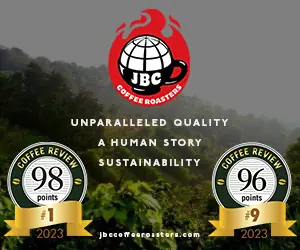If all goes well, each processing method accentuates certain aspects of coffee flavor. Generally, coffees processed by the mechanical mucilage wet method will be brightest, driest, and cleanest tasting. Those processed by the ferment-and-wash wet method will be next brightest and driest, though often a bit fruitier and more complex. Coffees processed by the semi-dry and the dry methods tend to be fruitiest, most complex, and heaviest in body owing to longer contact with fruit residue during drying.
Most fine coffees are processed by the classic ferment-and-wash wet method. A few, like Jamaica Blue Mountain and some Costa Rica coffees, are now processed by the mechanical mucilage method. A handful of coffees from Brazil and from Sumatra and Sulawesi are processed by the semi-dry or pulped natural method. Only three of the world’s premium coffees are processed by the dry method: the finest coffees of Brazil and the splendid coffees of Yemen and the Harrar region of Ethiopia.
Why is the wet method used to process most of the finest coffees? Mainly because so much more can go wrong during dry-processing than during wet-processing. Since drying the entire coffee fruit takes so much longer than drying washed beans, there are more opportunities for the fruit to attract mold, ferment, or even rot. Most dry-processed coffee is also picked carelessly, which means there will always be some contamination of flavor by green or overripe fruit. Processed with care, however, dry-processed coffees can be as good as washed coffees, if not better owing to their complexity and fruit-toned sweetness.
Carelessness or mistakes during processing and drying can lead to a variety of flavor taints. A delay in removing the fruit from the bean at the onset of wet processing may cause sugars in the fruit to ferment, for example, tainting the coffee with the taste of sweet ferment. A somewhat different kind of ferment taste occurs when the fruit flesh or mucilage is not entirely removed from the bean before drying and the sweet residue still clinging to the bean ferments. Still another variant on the fermented taste may happen during dry processing when sugars ferment in the fruit before the fruit is fully on its way to drying. The ferment taste, if mild and cleanly sweet, may be an attractive sensation for many coffee drinkers, but in any degree of intensity it registers as an unpleasant rotten sensation and is clearly a flavor defect.
Another set of taints occurs when micro-organisms that cause mold or mildew are attracted by the moist fruit or beans. If the micro-organisms develop in the bean during drying, the hard, flat mildewed taste they provoke is called mustiness or, in extreme cases, hardness. If the micro-organisms develop later, during storage, provoked by dampness in the warehouse or shipping container, the resulting mildly mildewed taste is typically called bagginess, since it often incorporates the rope-like taste of the bag in which the coffee was stored.










